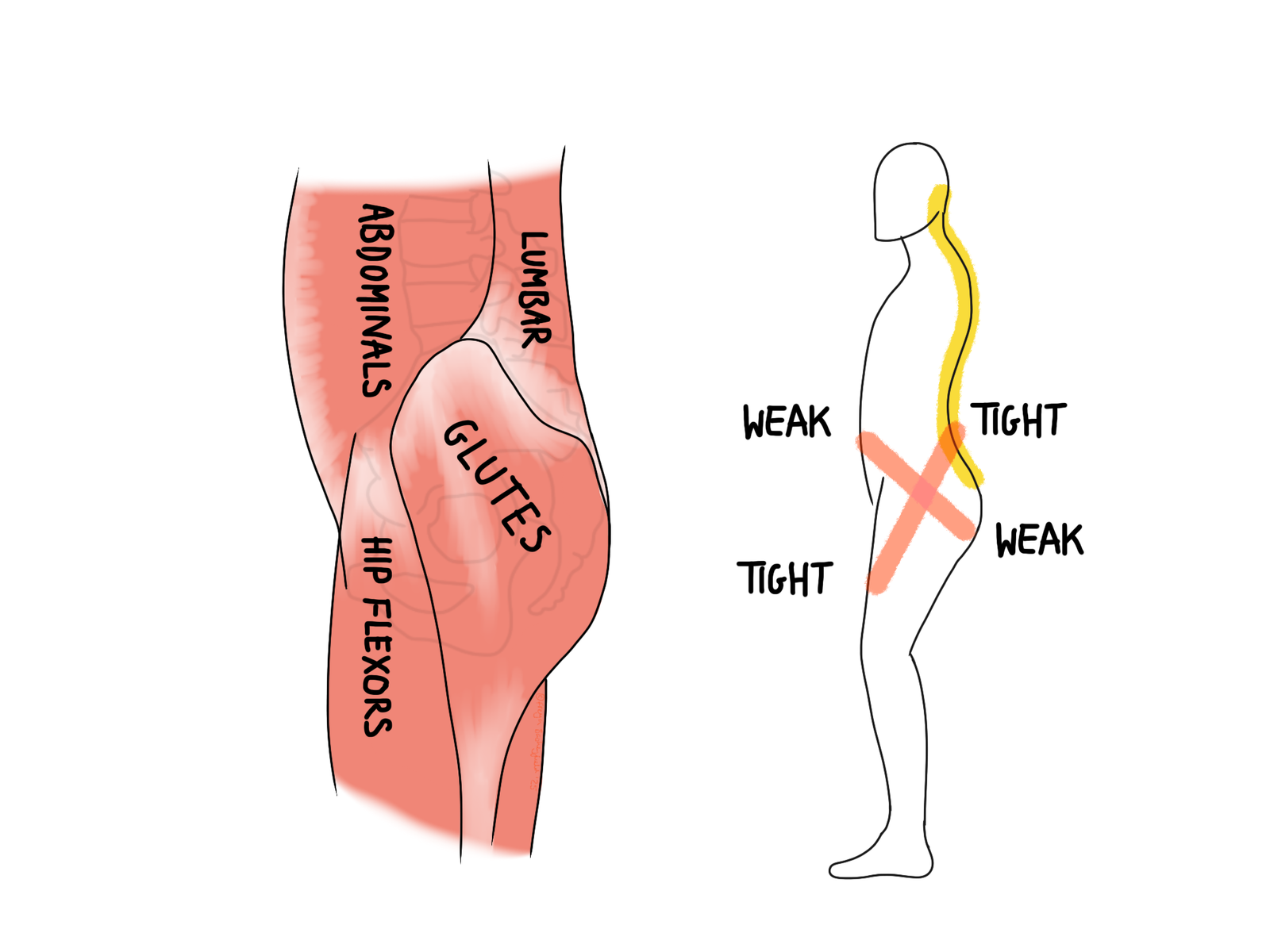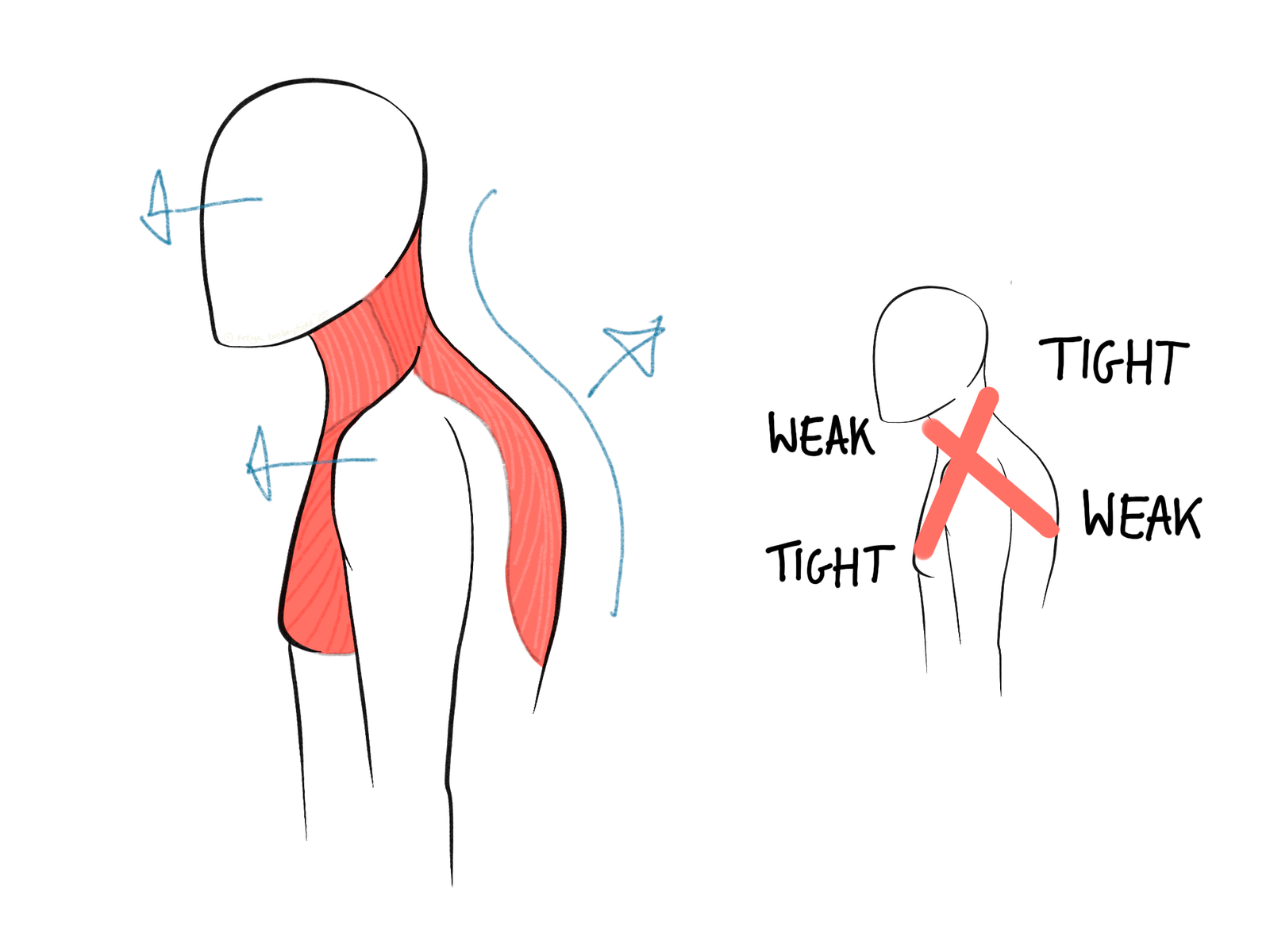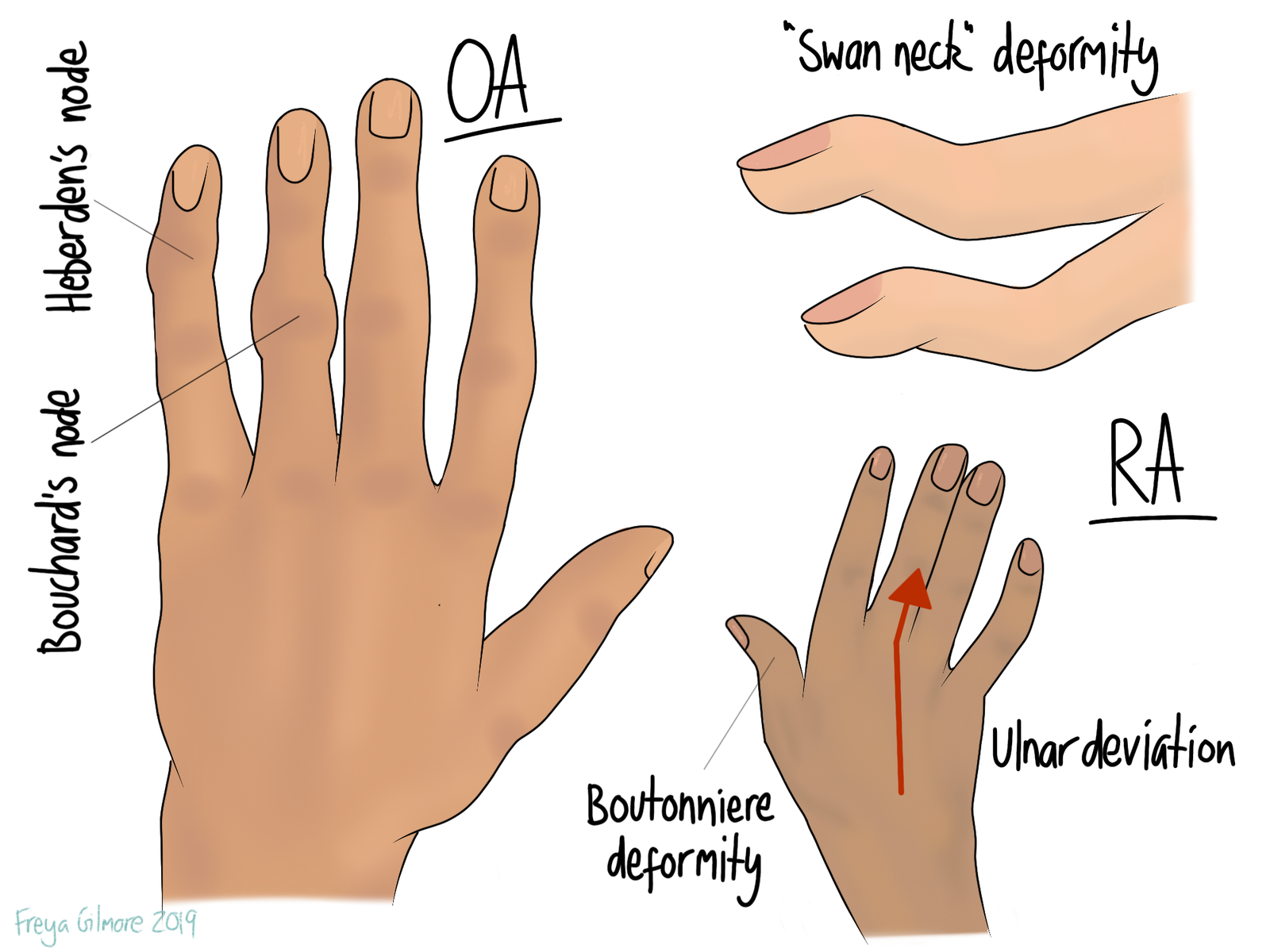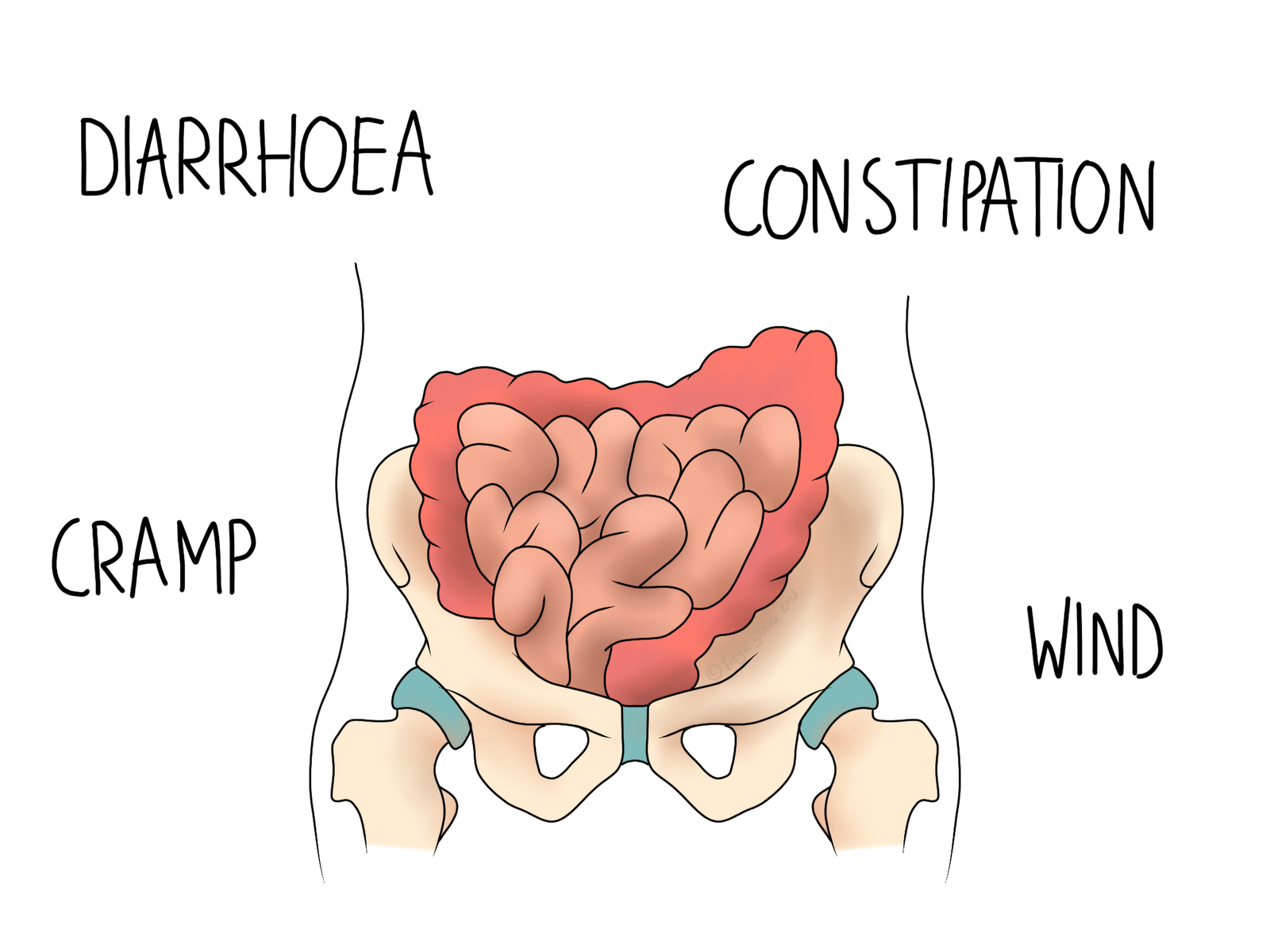Upper Cross Syndrome describes a common muscular imbalance that develops around the shoulders and neck…

Lower Cross Syndrome
What Is Lower Cross Syndrome?
Lower Cross Syndrome is a muscular imbalance around the thighs, pelvis, and lower back. It mirrors the pattern of Upper Cross Syndrome, which may develop in conjunction with it.
In Lower Cross Syndrome, some muscles become short and tight, while their opposing muscles become long and weak. This imbalance tilts the pelvis forwards, deepening the curve of the lower back.
The Muscular Pattern
- Tight muscles: hip flexors (front of the thigh) and postural muscles of the lower back
- Weak muscles: abdominal muscles and glutes
The developing posture is commonly seen in people with a sedentary lifestyle, but also in the early stages of hip osteoarthritis. As the hip joint loses extension, the body adapts by tilting the pelvis, meaning you can still achieve a long stride but without extending the hip past neutral. Tension in the front of the hip further exacerbates this, and the arthritis can progress undisturbed as there are no obvious symptoms. It’s only when the compensatory pattern develops later that the original problem becomes clear. Your osteopath can help you to identify and manage these problems before they develop too far.
Muscle Imbalance Postpartum
New mums are particularly prone to imbalances like these. Over the course of pregnancy, the lower back often dips into a deeper lordosis as the abdominal muscles separate and the bump brings the centre of gravity forward. Suddenly after birth, the centre of gravity changes, but the muscles continue to behave as they did. Most new mums will have an abdominal muscle separation for at least 6 weeks after giving birth, during which time abdominal strength is compromised. If it was a caesarean birth, there’s also the recovery from major abdominal surgery to contend with too.
Learning about rehabilitating your abdominal muscles after birth will put you on a better course to come out of the fourth trimester (and beyond) stronger and more resilient. In the very early days, that rehabilitation should focus on deep abdominal breathing and little more. Over time you can build up to gentle abdominal exercises (avoiding high pressure positions like crunches) or prenatal type classes. Once this is becomes easy, you can move into stronger routines.
Symptoms of Lower Cross Syndrome
People with Lower Cross Syndrome often experience:
- low back pain or stiffness
- achey hip joints
- thigh or glute soreness
- awareness that their posture is becoming more hunched
If these symptoms resonate, you can make an appointment via the link below.
Links to Upper Cross Syndrome
Because the body works as one unit, imbalances in the lower body are often reflected higher up. The image above shows how the whole spinal posture changes in response to Lower Cross Syndrome. The body will always try to keep the head up and level, so this posture lends itself to a similar muscular imbalance around the shoulder girdle. Here the chest and back of neck muscles become tight, and the upper back and front of the neck become stretched. Again the sedentary link plays a role here, as a tight chest can result from sitting at a desk on a computer all day.
Treatment and Management
As with all problems, your osteopath will look at how the body functions as a whole, and the context of your daily life to develop a management plan. In the early stages, exercises may be as simple as altering your ergonomics and taking regular breaks for movement. If the problem has been present for a while, it might take longer to improve.
Management usually involves:
- massage and stretches for tight hip flexors and lower back muscles
- exercises to strengthen weak abdominals and glutes
- mobilising the lower back and pelvic joints
But your exact plan will be tailored to you specifically.
Click here to make an appointment for your Lower Cross Syndrome in Bracknell




